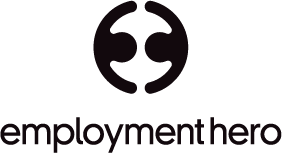The writing is on the wall Reform in the NDIS has been in focus since Bruce Bonyhady and Lisa...
'Recruitment', a pain point for Disability Service providers.

Finding the right people
Any organisation delivering services through the NDIS would know the pain of the constant recruitment cycle. Providing services is a people industry, and without the people to deliver the services, there are no services. Not only do we need people to deliver the services, but they also have to be experienced, have required clearances, have appropriate training (medication, manual handling, first aid ++++), be flexible to work across 24/7 rosters, have common sense, be person-centred and have values that align with those of your organisation (a Unicorn perhaps?).
As providers, we aim to find the best people to ensure our clients receive high-quality, continuous support. When you think you have the team all together and it is running like a well-oiled machine, you get the email, "I am writing to notify you of my resignation……………………….." And here it goes again. When new clients come on board, you need more staff, so the recruitment cycle continues. It is unlikely any provider has spare employees waiting for a shift or new clients; what comes first, the horse or the cart?
Aged Care Award Changes
With recent changes to the Aged Care Award, we are now seeing employees in this industry receiving approximately five dollars more an hour (with further increases coming) than those under the SCHADS Award; even if you offer 10% above the SCHADS Award, you can’t compete with the new increases in the Aged Care Award—another barrier to recruiting and keeping good employees.
So, what is the answer?
Having a solid Multi-Pronged Recruitment and Workforce Strategy
Increase Pay Competitiveness:
Providers need to work together to advocate for sector-wide wage adjustments to the SCHADS Award that align with the NDIS Price Guide and the Aged Care Award.
Explore innovative ways to offer benefits, such as retention bonuses or employee perks (e.g., paid training, extra leave). If you are looking at perks, it is essential to understand the workforce needs; the disability service workforce comprises 70% women (44% over 45). Offering discounts at grocery stores or for petrol might be better received than high-end fashion stores or fishing charters.
Prioritise Employee Satisfaction:
Develop a supportive culture through flexible rostering (where possible), wellbeing initiatives (EAP or Gym memberships) and professional development. Happy employees are more likely to stay and recommend the workplace.
Focus on Attracting Passionate Individuals:
Enhance recruitment advertising to highlight the purpose-driven nature of the work, aligning with candidates who prioritise meaningful and purposeful careers over just salary considerations.
Establish Recruitment Pipelines:
Partner with vocational training organisations, universities, and community groups to cultivate a steady stream of qualified candidates.
Streamline Processes:
Invest in technology to optimise hiring, onboarding, and scheduling. AT MAP, we use Employment Hero, which has seen our onboarding process increase efficiency and effectiveness.
Offer Unique Value:
Differentiate your organisation by emphasising flexible working arrangements, mentoring opportunities, or specialised training that employees can’t easily find elsewhere. At MAP we offer Leadership Development opportunities to grow the skills of our workforce and support succession planning.
Advocate for Systemic Changes:
Lobby for better funding and support for the disability services sector to ensure long-term sustainability.
By implementing these strategies, providers can address recruitment challenges and build a resilient workforce capable of delivering high-quality support.



